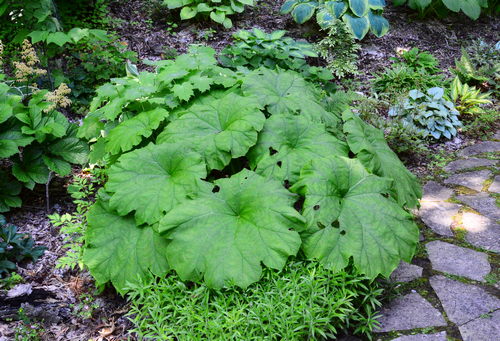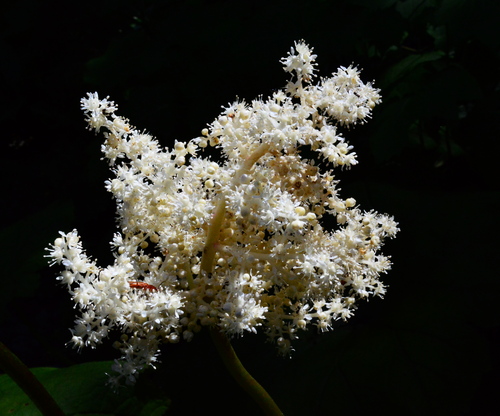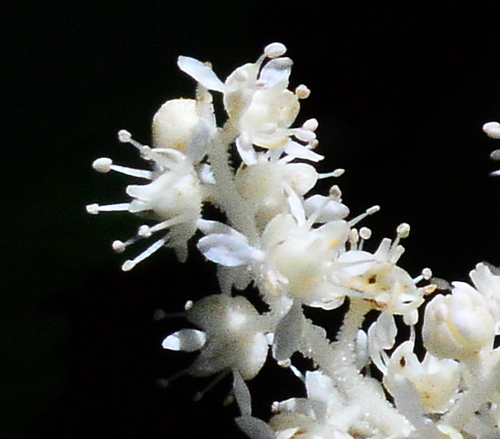Plant of the Month for August, 2019

(a-stil-BOY-dees tab-yoo-LAIR-iss)
General Information:
Do you want to grow gunnera but your climate is too cold? Then Astilboides tabularis is a good alternative. It has some of the largest leaves you can grow in colder climates and it makes a strong statement in any garden. Most people who visit my garden are unfamiliar with the plant and find it very exotic. Its leaves are an odd round shape that reminds one of an umbrella or table top. They easily reach 60-90 cm (2-3 feet) in diameter.

Astilboides tabularis:photo by Robert Pavlis
Astilboides tabularis is also known as the shield-leaf Rogers plant, or shield-leaf Rodgersia, but most people just use the botanical name and call it astilboides. The genus name means astilbe-like in reference to its white flowers that are born on 120 cm (4 ft) stems.
It prefers shade to full shade and a wet location where it will stay green all summer long. It also grows well in a dryer location, but then the leaves usually get brown edges by late summer as the temperatures rise and water levels drop. It does not like to be submerged in water.

Astilboides tabularis:photo by Robert Pavlis
Wind can be a problem. The large leaves act like sails and easily capture wind which can damage the leaves. It is therefore best planted in a sheltered location.
The seeds are very small and hard to separate from the seed pod chaff. If you simple collect all of the material and spread it on soil, the seed will sprout.

Astilboides tabularis:photo by Robert Pavlis
Life Cycle: perennial
Height: 90cm (2 ft)
Bloom Time: early summer
Natural Range: Northern China, Manchuria, North Korea
Habitat: moist woodlands, near lakes and streams
Synonyms: Rodgersia tabularis
Cultivation:
Light: part shade to full shade
Soil: high organic matter
Water: average to moist
USDA Hardiness Zone: (3?) 4- 9
Propagation: seed, division
Seedex availability (ORG&HPS annual Seed Exchange): occasionally
